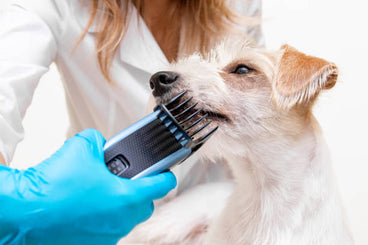A dog first aid kit is one of those things you hope you never need—but when you do, it must be ready. Like human first aid kits, your pet’s kit should be stocked, current, and tailored to their health needs. But how often should you really check it? And what exactly should be in it? In this blog, we’ll walk you through everything you need to know to keep your dog’s emergency care kit up to date and useful.
Why is it important to regularly check your dog’s first aid kit?
Items in your dog’s first aid kit can expire, leak, or get used up without you realizing it. If an emergency strikes and you grab the kit only to find expired antiseptic or missing gauze, that delay can make a big difference. Regular checks ensure everything works when needed.
- Prevents using expired medical items
- Ensures supplies are fully stocked
- Keeps items clean, dry, and organized
How often should I check my dog’s first aid kit?
It’s recommended to check your dog’s first aid kit every 3 to 6 months. Mark it on your calendar or pair it with a routine like grooming appointments or vet visits. If your dog has medical conditions, travels often, or hikes with you, check it more frequently.
- Every 3 months for active dogs or frequent travelers
- Every 6 months for household pets with basic needs
- After any use, immediately restock the items used
What should be included in a dog’s first aid kit?
A good kit should include wound care supplies, tick/flea tools, medications, gloves, and basic grooming tools. You should also have copies of your dog’s medical history, vet contact info, and any personal medication they’re currently taking.
- Gauze pads, wraps, antiseptic wipes
- Styptic powder, tweezers, scissors
- Hydrogen peroxide (for emergency vomiting under vet guidance)
- Gloves, digital thermometer, saline solution
- Your dog’s medications and emergency contacts
Shop Complete Dog First Aid Kits
How do I know if items are expired or need replacing?
Most supplies will have an expiration date printed on them. Look for dates on ointments, wipes, solutions, and medications. Check for broken seals, dried-out wipes, or packaging damage. Even non-expired items should be replaced if they appear used or compromised.
- Check the date on everything, especially liquids
- Inspect bandages and tapes for dryness or discoloration
- Replace anything that’s been opened or looks unsanitary
Where should I keep the first aid kit?
Store your kit in a cool, dry place that’s easy to access. Avoid damp bathrooms or garages where humidity might ruin supplies. Many dog owners keep a small version in the car and a full kit at home. If you hike or camp with your dog, a portable pouch is ideal.
- Keep kits at home, in the car, or in your dog’s travel bag
- Avoid direct heat or humidity
- Label it clearly so others can use it if needed
What’s the difference between human and dog first aid kits?
While some items overlap, dogs have specific needs. Human painkillers can be toxic to pets, and dog-safe antiseptics or tick tools are essential. Never substitute a human item unless your vet confirms it’s safe. It's always best to have a pet-specific kit.
- Dog kits include pet-safe antiseptics and medications
- Contain tools designed for fur, claws, and tick removal
- Include pet care instructions and emergency contacts
What should I do after using the kit in an emergency?
After any use, take a few minutes to replace what you used and check for any other items that might be low or outdated. You should also clean any tools, like scissors or thermometers, before putting them back. This keeps your kit ready for the next time.
- Clean reusable items with pet-safe disinfectant
- Restock any missing items immediately
- Make a note of what was used for future vet visits







